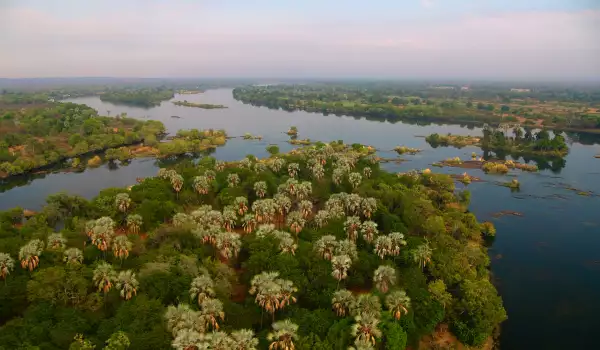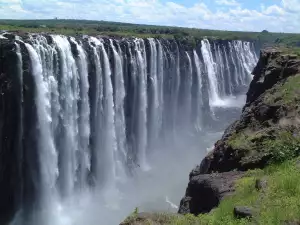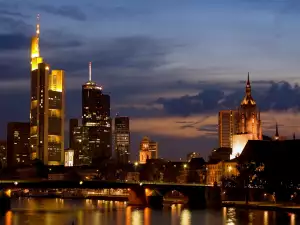Zambezi river

Zambezi river, is a river that forms one of the largest and most beautiful natural sights of our planet, namely the Victoria Falls. It was formed along the Zambezi, in the territory of Zimbabwe and Zambia. Composed of four separate parts - the Devil's Cataract, Rainbow, Chief Falls and Eastern Cataract, Victoria reaches a length of 1.7 kilometers and is considered to be the widest waterfall in the world.
River Zambezi is the fourth longest river in Africa and the largest African river that flows into the Indian Ocean. The area of its catchment reach extends 1 390 000 sq km, slightly less than half of the watercourse of the Nile. The length of the Zambezi River reaches 3540 km.
It springs from the Lunda Plateau, in northwestern Zambia, goes through Angola, moving along the border with Namibia and Botswana, again passing through Zambia, Zimbabwe and comes to Mozambique, where it pours into the Indian Ocean through a vast delta extending over an area of 880 sq.km.
Zambezi serves as a natural border between Namibia and Zambia and between Zambia and Zimbabwe. Among the major dams built on the river are Kariba Dam (for Zambia and Zimbabwe) and Cahora Bassa (for South Africa). Prior to the opening of Victoria Falls, Zambezi River reaches a width of the riverbed of about 1800 meters.

Lower reaches of the Zambezi is the only place where people can sail ships, and its width is about 8 km.
Among the important tributaries of the Zambezi River are Kuindo who is to the right and to the left, the rivers Cafu, Luangua tribute in. Some of the larger cities through which the Zambezi are Mongu and Livingstone in Zambia, Tete in Mozambique and Katima Mulilo in Namibia.
Victoria Falls is considered the boundary between the upper and middle part of the Zambezi. After the amazing waterfall, which locals call Mosiah-Oa-Tunney, and in translation means "blaring smoke”, the Zambezi River continues east for about 200 km. Then the river flows swiftly through the gorge of Batoka, which is considered one of the most extreme and best places in the world where you can practice your rafting and canoe descents.
The bottom of the Zambezi River is 650 km from Kahora Bassa to the merger into the Indian Ocean. Even here the river is not deep enough and cuts a number of sleeves, but during the rainy season all the water gathers into a large deep river. Among the attractive representatives of the wildlife that inhabit the river bed and banks of the Zambezi are eagles, herons, pelicans, hippos, crocodiles, etc.















